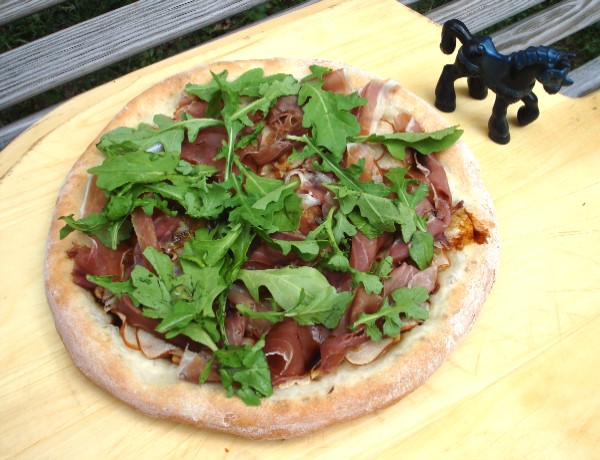
In The Odyssey, the Greek poet Homer calls pears a “gift of the gods.”
Thanks to Neil Cherry at Cherry Orchards, I’ve made one of my favorite pizzas with what is known as the “aristocrat of pears.” It’s the Bosc. I took this Northern European variety on a jouney south to Italy for a pairing of some righteous Gorgonzola and Prosciutto di Parma, arugula and a basamic glaze, adding a textural foil of salty cashews for fun. It’s a favorite pizza that incorporates the same agra dolce (Italian for sweet and sour) effect that works so well on many of my pizzas.

The Buerre Bosc was named by the French, who have a penchant for naming pears first by their taste or outstanding characteristic, then the name or origin reference. (Kinda like “Goofy John.”) Buerre is a reference to the buttery taste of the Bosc.
The history of this fine pear is as muddled as all those gnarly European wars that occurred during the previous centuries. Even today, the claim to this pears’ introduction is argued as being in either Belgium or France. The name comes from the director of the Paris Botanical Gardens, Mr. Bosc, who is thought to have raised the pear from seed. Don’t tell that to residents of Appremont, France, though. They say it was initially grown there, and they call it the Buerre d’ Appremont. King Louis the XIV loved the Bosc so much he demanded they be planted endlessly around his extensive gardens.
I love the Bosc pear for the same reason I love Granny Smith apples: the flesh is firm and dense, perfect for pizza. The taste is less likely to be overwhelmed by strong spices, meats or vinegars. Many chefs love the Bosc because of the tapered bottle-like top distinguishes it as a pear (and not an apple) and it lends itself perfectly for poaching. I also use the Bosc in a Succar bi Tahin, sweet Beruit tahini rolls where the rolled-out dough is topped with honey-sweetened tahini. After I take it from the oven, I slit the middle of the bread and shove (yes, technical baking term) a vanilla, nutmeg and cinnamon poached Bosc right into the slot.
The Bosc is called Kaiser or Kaiser Alexander in Italy, where use of the pear is extensive. Italy is one of the largest producers in the world, cultivating about 10 varieties, with most coming from the Emilia Romagna region. Campania, Veneto, Lazio, Sicily and Lombardy are close behind. Today, you can’t pick up any cookbook without seeing the combination of Gorgonzola, pear, and balsamic with arugula. Such a great combo is heavenly, to say the least. Let’s get cooking!
Use easy dough recipe to make two 7 ounce dough balls. Freeze one if you like.
1 large or 2 small Bosc pears
3 large slices of prociutto
1 tablespoon extra virgin olive oil
3 tablespoons crumbled Gorgonzola
5 cherry-sized fresh mozzarella balls (ciliegini) or 4 ounces of cubed fresh mozzarella
2 tablesoons cashews (roasted preferred but unroasted or roasted-salted are okay)
15 leaves of baby arugula
Balsamic glaze or balsamic vinegar for drizzling
Pre-heat the oven to 475 with an upside down, heavy duty cookie sheet (or half sheet pan is the pizza industry term) inside.
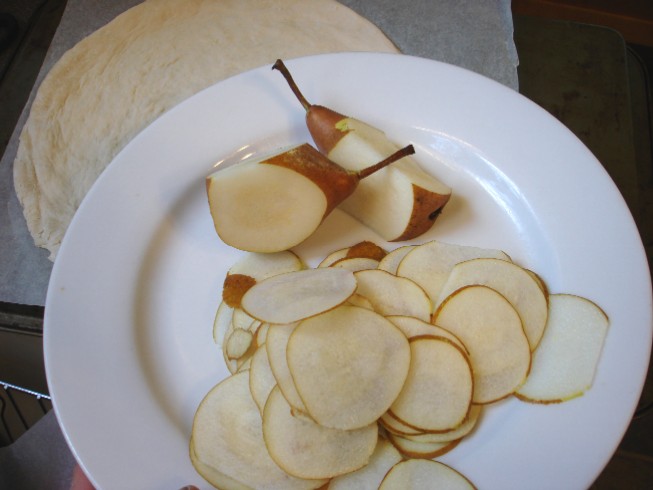
Holding each pear over the mandoline, swipe it, producing slices a little less thick than a quarter.
Making the pizza
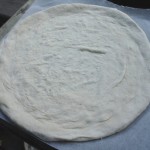
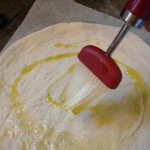
Take your already pulled pizza round and place it on a parchment square. Brush extra virgin olive oil on the dough.

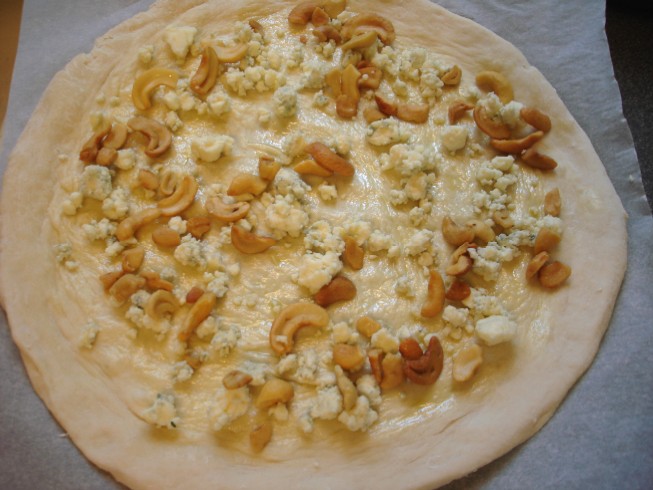
Sprinkle Gorgonzola, mozzarella, then cashews on the pizza.

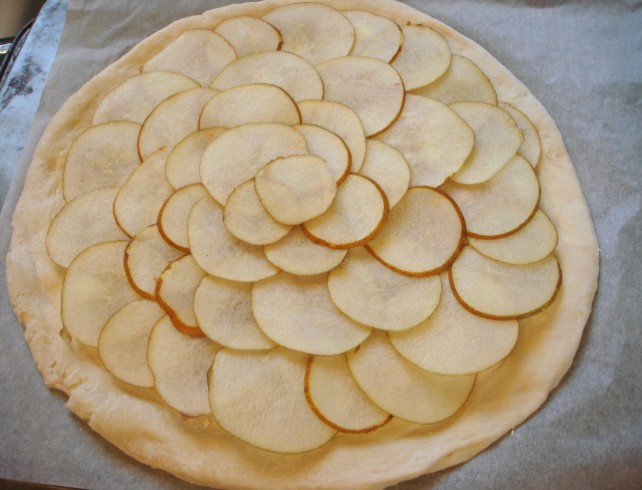
Place the slices of pear (so Louis the XIV would be proud) in a clockwise motion, one slice over the other one inch from the outer edge of the pizza. Continue going around, using the largest slices for the outside and smaller ones in the center.
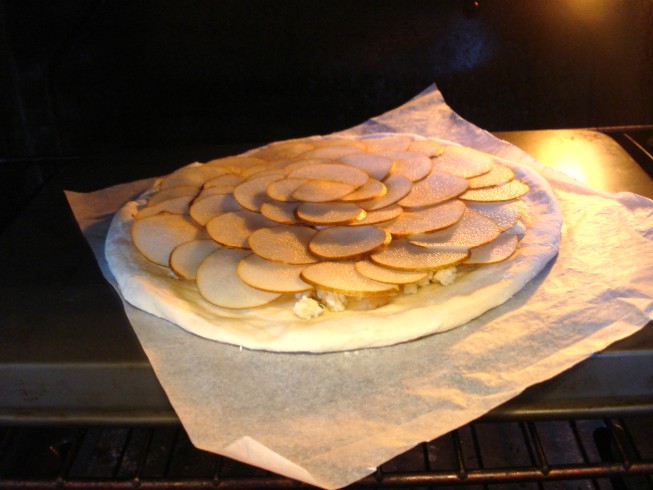
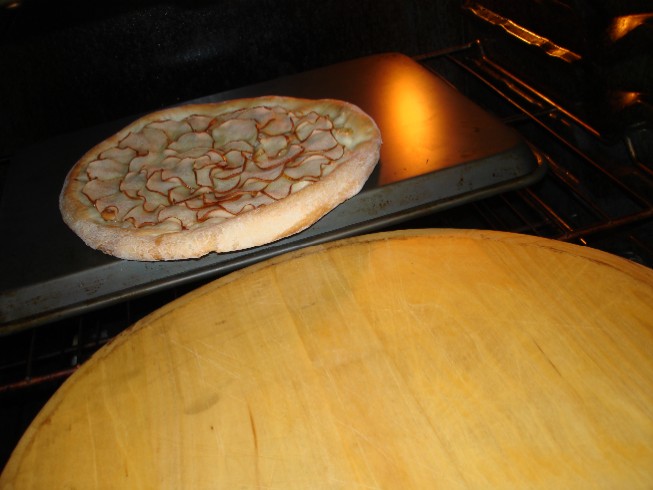
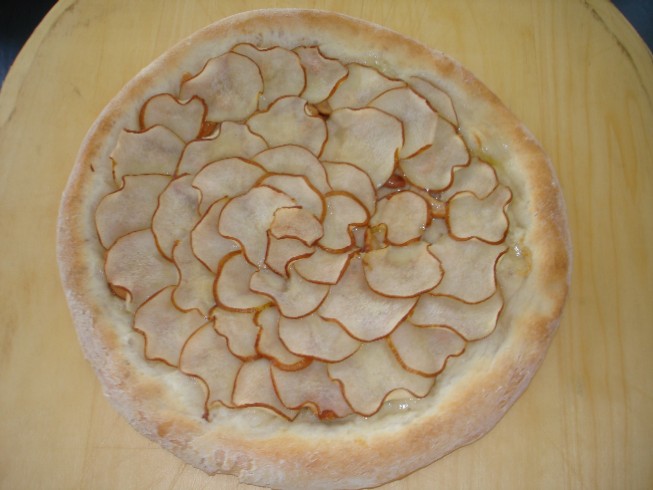
Put the pizza with parchment on the sheet pan in the oven . Bake for 10 to 12 minutes, or until golden brown.
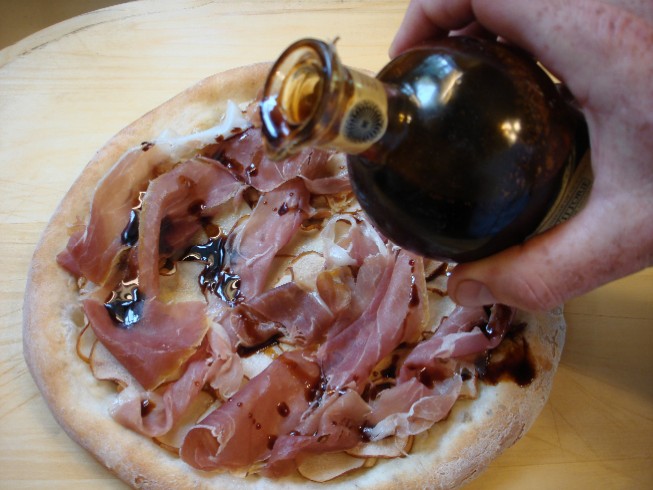
Pull from oven and tear each large slice of Prosciutto di Parma in half,. Place these slices on the pizza. You will see the fat melt, adding to the flavor of this pie. Drizzle the balsamic vinegar over the pizza. (Do not add too much, as the flavor will dominate.)
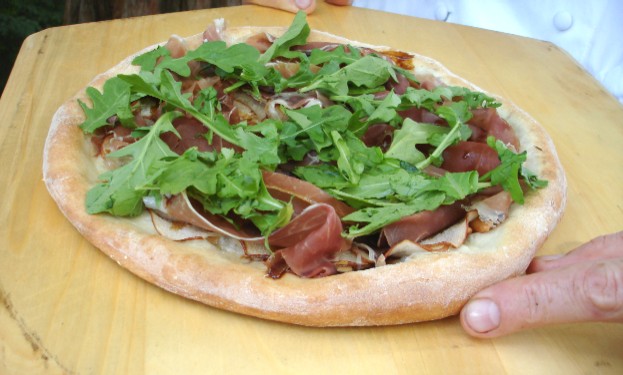
Place the arugula leaves over the prosciutto and serve immediately, keeping your thumb up in the air and a stupid smile pasted on your face.


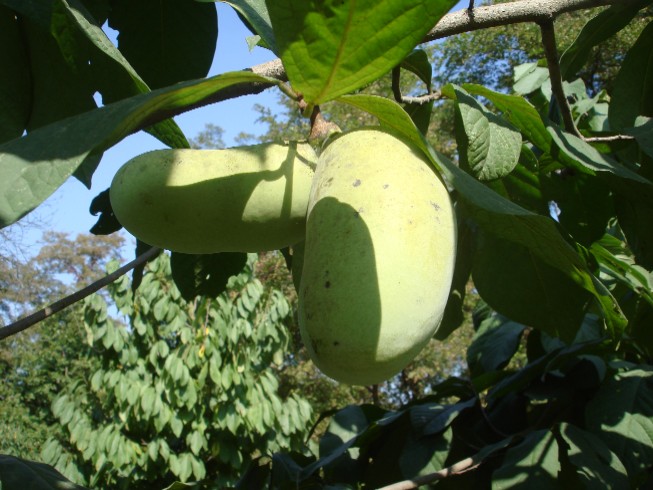
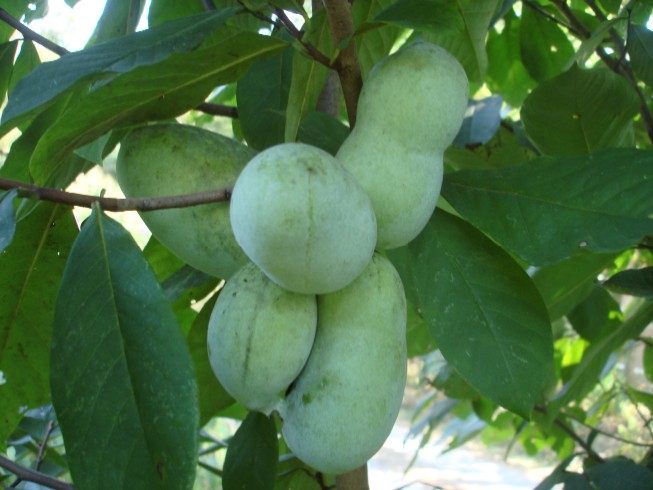
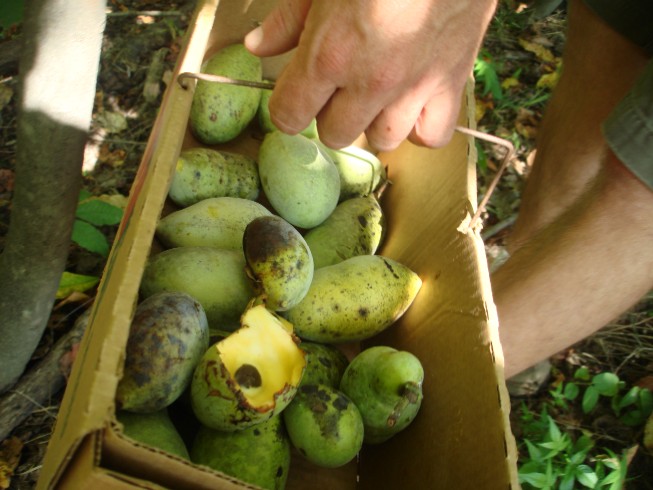
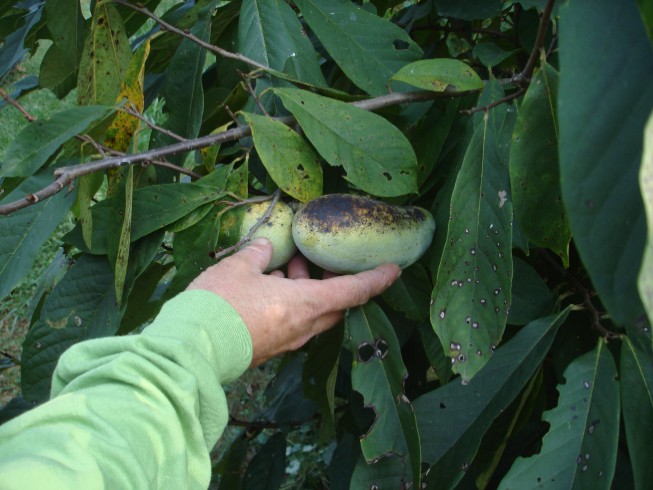
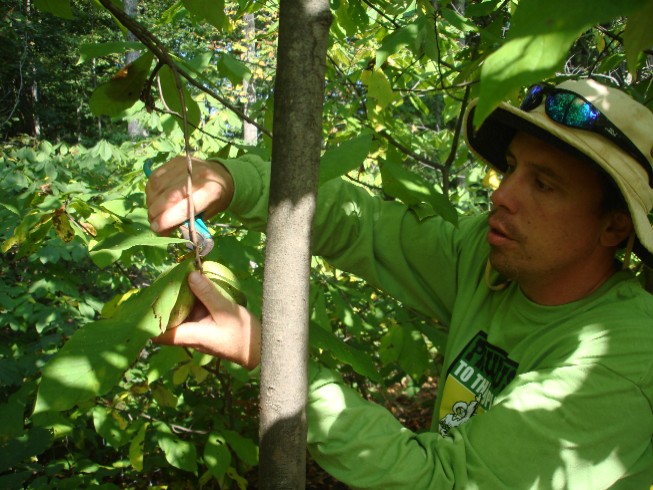
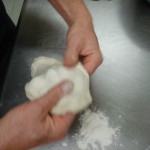
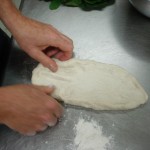
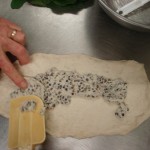
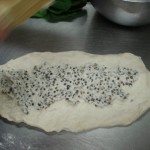
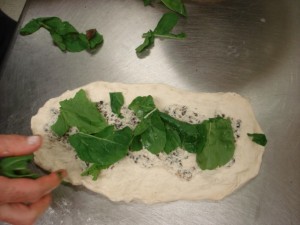
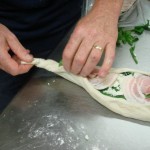 2.
2. 3.
3.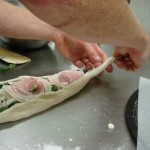 4.
4.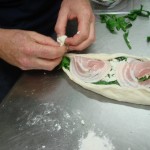
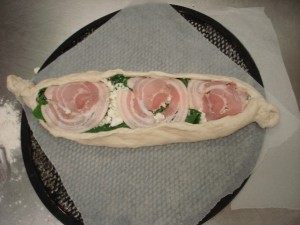
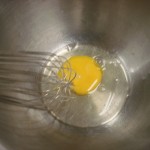 2.
2. 3.
3.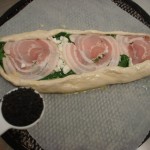 4.
4. 

